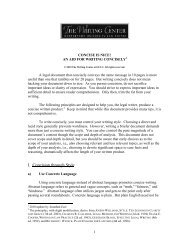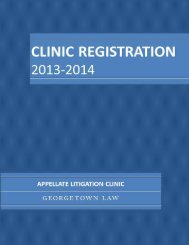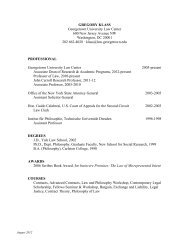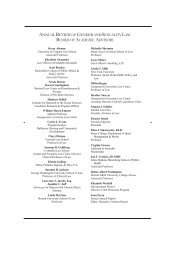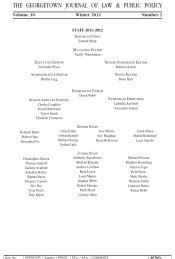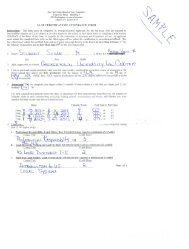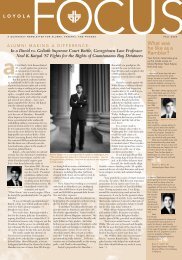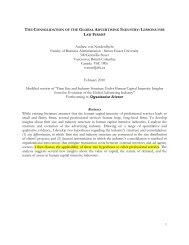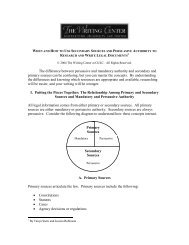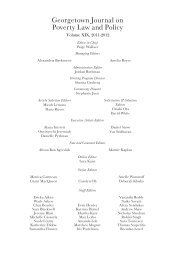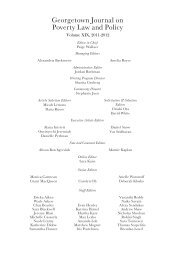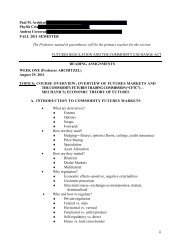Date: April 12, 2013 Topic: The Shrinking ... - Georgetown Law
Date: April 12, 2013 Topic: The Shrinking ... - Georgetown Law
Date: April 12, 2013 Topic: The Shrinking ... - Georgetown Law
You also want an ePaper? Increase the reach of your titles
YUMPU automatically turns print PDFs into web optimized ePapers that Google loves.
comparison of costs associated with each alternative (Williamson, 1985). Market-based buy<br />
strategies tend to have lower costs and thus dominate comparable make strategies<br />
emphasizing firm ownership of and hierarchical control over suppliers. But cost advantages<br />
of buy over make strategies reverse themselves in exceptional circumstances where hazards<br />
with market-based contracting are substantial. In contrast, RBV contends that the reason an<br />
activity is conducted within the firm is not market failure but rather firm success: the firm as<br />
an institution enjoys an ‘organizational advantage’ in organizing economic activity (Madhok,<br />
2002:536). Thus, RBV explains firm boundary-setting based on competitive interest in<br />
exploiting value from difficult to imitate resource bundles (Barney, 1986; Peteraf, 1993).<br />
TCE and RBV differ on many dimensions (Conner, 1991), but share assumptions<br />
about the choice of one ‘optimal’ exclusive governance mode that runs counter to long-term<br />
use of multiple sourcing modes. Nevertheless, the simultaneous use of multiple sourcing<br />
channels is something we observe empirically, and numerous studies testify to its systematic<br />
use, at different points in production of goods and services in different industry contexts<br />
(Bradach, 1997; Heide, 2003; Jacobides et al., 2006; Parmigiani, 2007; Porter, 1980). Plural<br />
sourcing, along with other terms such as tapered integration or concurrent sourcing, has been<br />
used to describe such phenomena.<br />
<strong>The</strong> benefits and rationale for undertaking plural sourcing are well understood. Some<br />
of the earlier arguments focused on the role of demand uncertainty, whereby firms can avoid<br />
maintaining idle capacity through the use of external suppliers (Adelman, 1949), and the<br />
threat of backwards integration to external suppliers (Harrigan, 1986). Besides these, firms<br />
also have a better understanding of the production process when making and buying and are<br />
thus better at monitoring suppliers (Dutta et al., 1995; Heide, 2003). Finally, ‘knowledge<br />
complementarities’ between the two sourcing modes have been noted (Puranam et al.,<br />
forthcoming). For example, internal and external suppliers can benefit from mutual learning<br />
6



